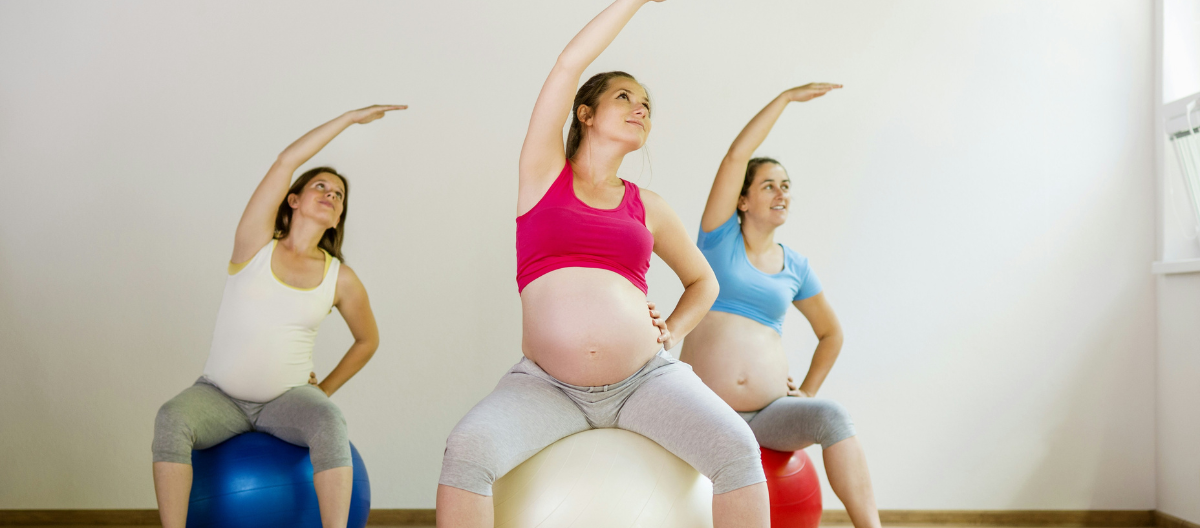Pregnancy and postpartum are transformative periods in a woman’s life, bringing with them many physical and emotional changes. Staying active during these times can significantly benefit both your health and your baby’s well-being. Prenatal fitness helps prepare your body for labor and delivery, while postnatal fitness aids in recovery and strengthens your body as you adapt to motherhood.
Benefits of Prenatal Fitness
Staying active during pregnancy offers numerous benefits, including improved mood, reduced risk of pregnancy complications, and easier labor and delivery. Here are some key advantages:
Boosts Energy Levels:
Pregnancy can be exhausting, especially during the first and third trimesters. Regular exercise helps increase energy levels by improving circulation and boosting endorphins.
Engage in moderate aerobic activities, such as walking, swimming, or prenatal yoga, for 20-30 minutes most days of the week.
Supports Healthy Weight Gain:
Maintaining a healthy weight during pregnancy is important for both your health and your baby’s development.
Low-impact exercises like swimming, stationary cycling, or walking can help you stay within the recommended weight gain range, while also reducing the risk of gestational diabetes.
Prepares for Labor and Delivery:
Strong muscles, particularly in the core and pelvic floor, can help support your body during labor and delivery, potentially reducing the risk of complications.
Focus on exercises that strengthen the pelvic floor, such as Kegels, and incorporate gentle strength training to build overall muscle endurance.
Reduces Pregnancy Discomfort:
Regular exercise can help alleviate common pregnancy discomforts like back pain, constipation, and swelling.
Prenatal yoga and stretching exercises can improve flexibility, relieve tension, and reduce discomfort, making you feel more comfortable as your body changes.
Safe Exercises for Each Trimester
As your pregnancy progresses, your fitness routine should adapt to accommodate your changing body. Here’s a guide to safe exercises for each trimester:
First Trimester (Weeks 1-13):
Maintain your fitness level with moderate-intensity exercises, while being mindful of any early pregnancy symptoms like fatigue or nausea.
Exercises:
Walking or Swimming: Gentle cardio that keeps your heart rate up without excessive strain.
Prenatal Yoga: Helps improve flexibility and reduce stress.
Pelvic Floor Exercises (Kegels): Strengthen the muscles that support the uterus, bladder, and bowels.
Second Trimester (Weeks 14-26):
Continue with moderate exercise, paying attention to balance and posture as your belly grows.
Exercises:
Modified Strength Training: Use light weights or resistance bands to maintain muscle tone. Avoid exercises that require lying flat on your back.
Low-Impact Cardio: Cycling on a stationary bike or using an elliptical machine.
Swimming: Provides full-body exercise without putting pressure on your joints.
Third Trimester (Weeks 27-40):
Prioritize gentle, low-impact exercises that keep you moving without overexerting yourself.
Exercises:
Prenatal Yoga: Focus on poses that open the hips and improve breathing, which can be beneficial during labor.
Walking: Continue with short, regular walks to keep your body active and reduce swelling.
Stretching: Gentle stretching to maintain flexibility and alleviate discomfort in the lower back and hips.
Always consult your healthcare provider before beginning or continuing any exercise routine during pregnancy. They can offer personalized advice based on your health and pregnancy status.
Postnatal Fitness: Recovering After Childbirth
After childbirth, your body needs time to heal and recover. Postnatal fitness focuses on gradually rebuilding strength, improving core stability, and addressing any specific issues like diastasis recti or pelvic floor weakness.
Starting Slowly:
Your body has gone through significant changes, and it’s important to ease back into exercise to avoid injury.
Begin with gentle activities like walking, deep breathing, and pelvic floor exercises. These can help improve circulation, support healing, and gradually reintroduce movement into your daily routine.
Strengthening the Core:
Pregnancy and childbirth can weaken your core muscles, leading to issues like back pain and poor posture.
Start with pelvic tilts, bridges, and modified planks to rebuild core strength. If you have diastasis recti (separation of the abdominal muscles), focus on exercises that specifically target this condition, such as gentle abdominal compressions and pelvic floor lifts.
Rebuilding Strength:
Rebuilding muscle strength is crucial for daily activities, especially as you carry and care for your newborn.
Gradually incorporate strength training exercises, like bodyweight squats, lunges, and arm exercises with light weights or resistance bands. These exercises can help you regain strength and stamina.
Addressing Pelvic Floor Health:
The pelvic floor undergoes significant stress during pregnancy and childbirth, and rebuilding its strength is vital for overall health and function.
Continue with Kegels and add exercises like pelvic bridges and side-lying leg lifts, which help strengthen the pelvic floor and surrounding muscles.
Balancing Fitness with Motherhood
Finding time to exercise as a new mother can be challenging, but it’s important for your physical and mental well-being. Here are some tips to help you stay active while caring for your baby:
Incorporate Your Baby:
Including your baby in your workouts can help you bond while staying active.
Try babywearing during walks or performing strength exercises like squats and lunges while holding your baby. You can also find “mommy and me” fitness classes that are designed for both you and your little one.
Set Realistic Goals:
Adjusting your expectations can help you stay motivated and avoid frustration.
Set small, achievable fitness goals, such as taking a short walk every day or completing a 10-minute workout while your baby naps. Gradually increase the duration and intensity as your energy and fitness level improve.
Prioritize Self-Care:
Taking care of your physical and mental health is crucial for your well-being as a mother.
Make time for activities that rejuvenate you, whether it’s a short yoga session, meditation, or simply stretching. Prioritizing self-care will help you feel more energized and better equipped to handle the demands of motherhood.
Remember that it’s okay to ask for help. Whether it’s enlisting a partner, friend, or family member to watch your baby while you exercise, or joining a support group for new mothers, having a support system can make a big difference.


